RAD 140 (Testolone): Results, Before and After Pictures, Dosages
 Disclaimer: Only researchers are authorized to administer SARMs, as they are not FDA-approved for cosmetic use and may have adverse effects. Dr. Touliatos is available for consultation should readers have any questions or concerns.
Disclaimer: Only researchers are authorized to administer SARMs, as they are not FDA-approved for cosmetic use and may have adverse effects. Dr. Touliatos is available for consultation should readers have any questions or concerns.
What is Testolone?
RAD 140, or Testolone, is a non-steroidal SARM (selective androgen receptor modulator) that replicates the anabolic effects of steroids by binding to the androgen receptor [1].
RAD 140 and other SARMs were formulated to provide more optimal treatment for patients suffering from:
However, RAD 140 has not yet been proven to be safe clinically [4,5,6].
How Does RAD 140 Compare to Steroids?
Although anabolic steroids produce significant increases in lean mass, they also induce negative cardiovascular, hepatic, estrogenic, and androgenic side effects in research [7,8,9,10,11]. Thus, through the mechanism of tissue selectivity, RAD 140 was synthesized to replicate the muscle-building and strength-enhancing attributes of steroids, but with limited adverse effects [12].
However, in existing studies, we observe RAD 140 replicating the toxicity of some anabolic steroids, such as Anavar or Primobolan [13,14,15].
Contents
- 1 What is Testolone?
- 2 RAD 140 Before and After Results
- 3 RAD 140-Only Cycle: Before and After
- 4 RAD 140 Before and After: 8-Week Cycle
- 5 RAD 140 Dosage
- 6 What Are the Side Effects of RAD 140?
- 7 RAD 140 PCT
- 8 What is the Half-Life of RAD 140?
- 9 RAD 140 vs. LGD-4033: What is the Difference?
- 10 What is the Price of RAD 140?
- 11 What Are RAD 140’s Stacking Options?
- 12 RAD 140 Reviews: How Are Subjects Responding?
- 13 Frequently Asked Questions
- 14 RAD 140 Pros and Cons
- 15 Summary
RAD 140 surfaced in 2010 after being formulated by a US biotechnology company, Radius Health. There is limited clinical research regarding RAD 140’s effects, particularly on humans over the long term.
How Effective is RAD 140?
RAD 140 is considered one of the more potent SARMs, possessing superior anabolic effects to testosterone propionate in animal trials.
In one study, monkeys experienced a 10% increase in lean body mass over 28 days on RAD 140 [16].
Similar to anabolic steroids, RAD 140 induces lipolysis and increases muscular strength due to its high affinity when binding to androgen receptors.
Disclosure: We do not accept any form of advertising on Inside Bodybuilding. We monetize our practice via doctor consultations and carefully chosen supplement recommendations, which have given our patients excellent results.
Best SARMs Company in 2025
Sports Technology Labs
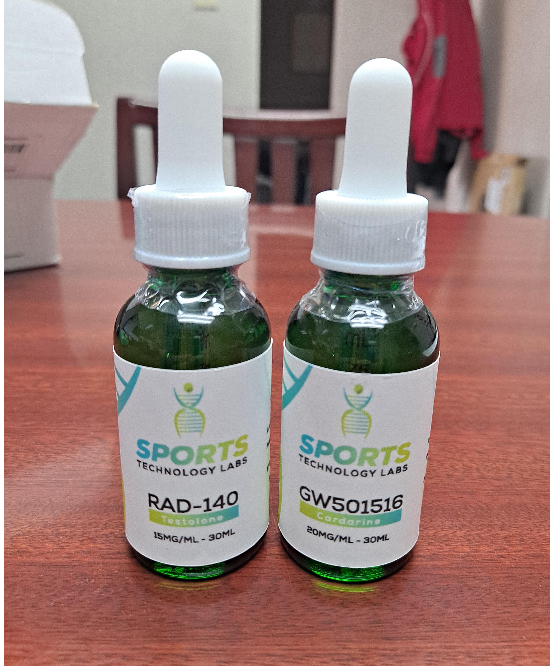
Sports Technology Labs is our recommended US source for SARMs in liquid and powder form.
They consistently formulate products with a purity level greater than 98%, authenticated via independent certificates of analysis.
Sports Technology Labs also has a no credit card fee policy, with other sources charging up to 10%.
Maximum discount code (15% off): inside15
Swiss Chems

Swiss Chems is our recommended source for SARMs in pill form. They guarantee a purity of at least 99% on all products.
Swiss Chems is a US company that provides excellent stealth shipping worldwide, successfully bypassing customs.
Time of arrival: 2-4 days (US), 7-10 days (worldwide).
Maximum discount code (10% off): inside10
Is RAD 140 Legal?
Due to RAD 140’s recent creation, it has not been approved for human use by the FDA [17]. Thus, testolone is only legal to buy for research purposes.
RAD 140 has also been banned by the World Anti-Doping Association (WADA); therefore, professional athletes are prohibited from using it and other SARMs [18,19].
RAD 140 Before and After Results
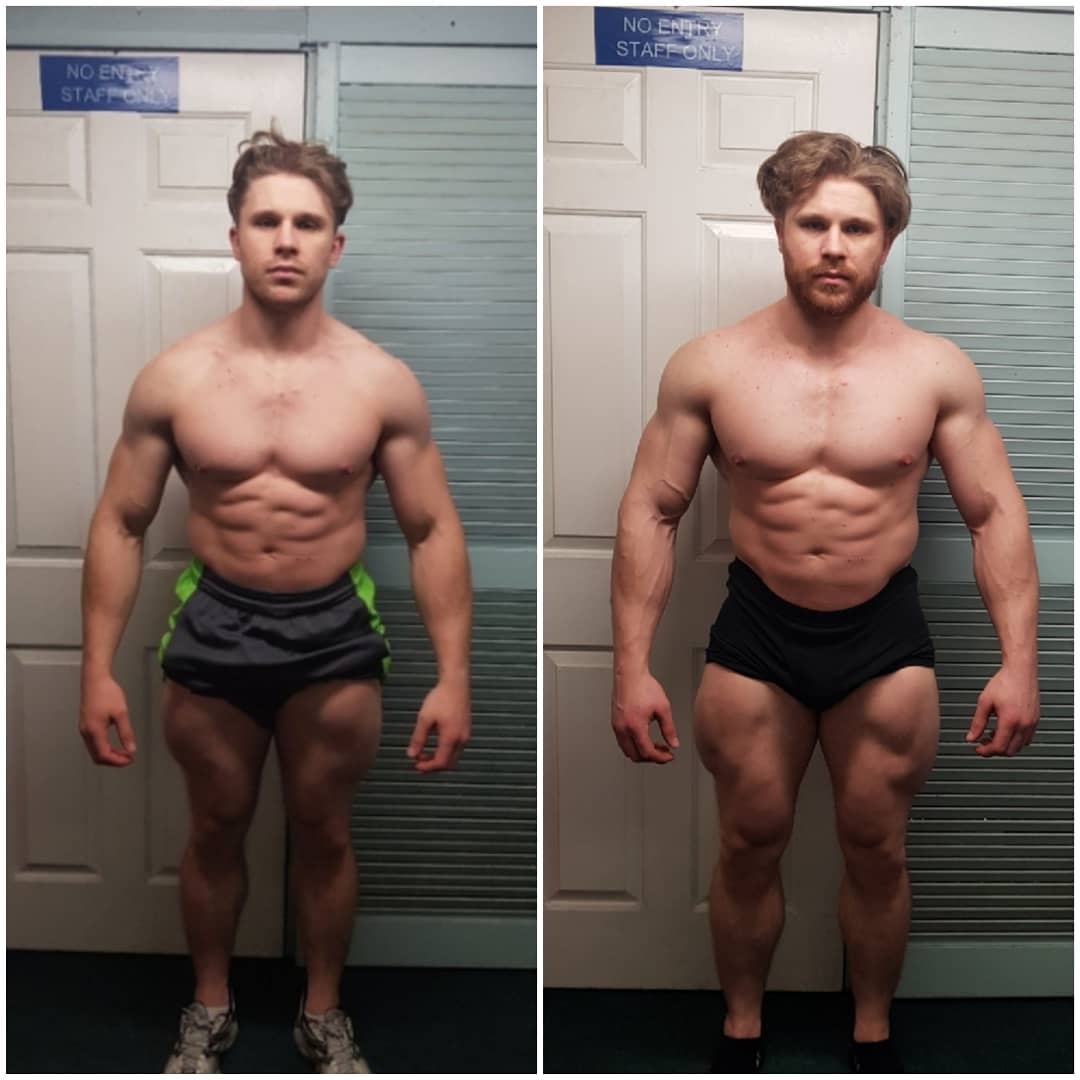
This Reddit user stacked RAD 140 with another SARM, known as LGD-4033. He also administered MK-677, known as Ibutamoren.
MK-677 is commonly referred to as a SARM due to its similar anabolic effects [20]. However, MK-677 is technically a growth hormone secretagogue (GHS).
This user experienced significant muscle growth, with some increases in visceral fat, made visible by a notable increase in stomach hypertrophy.
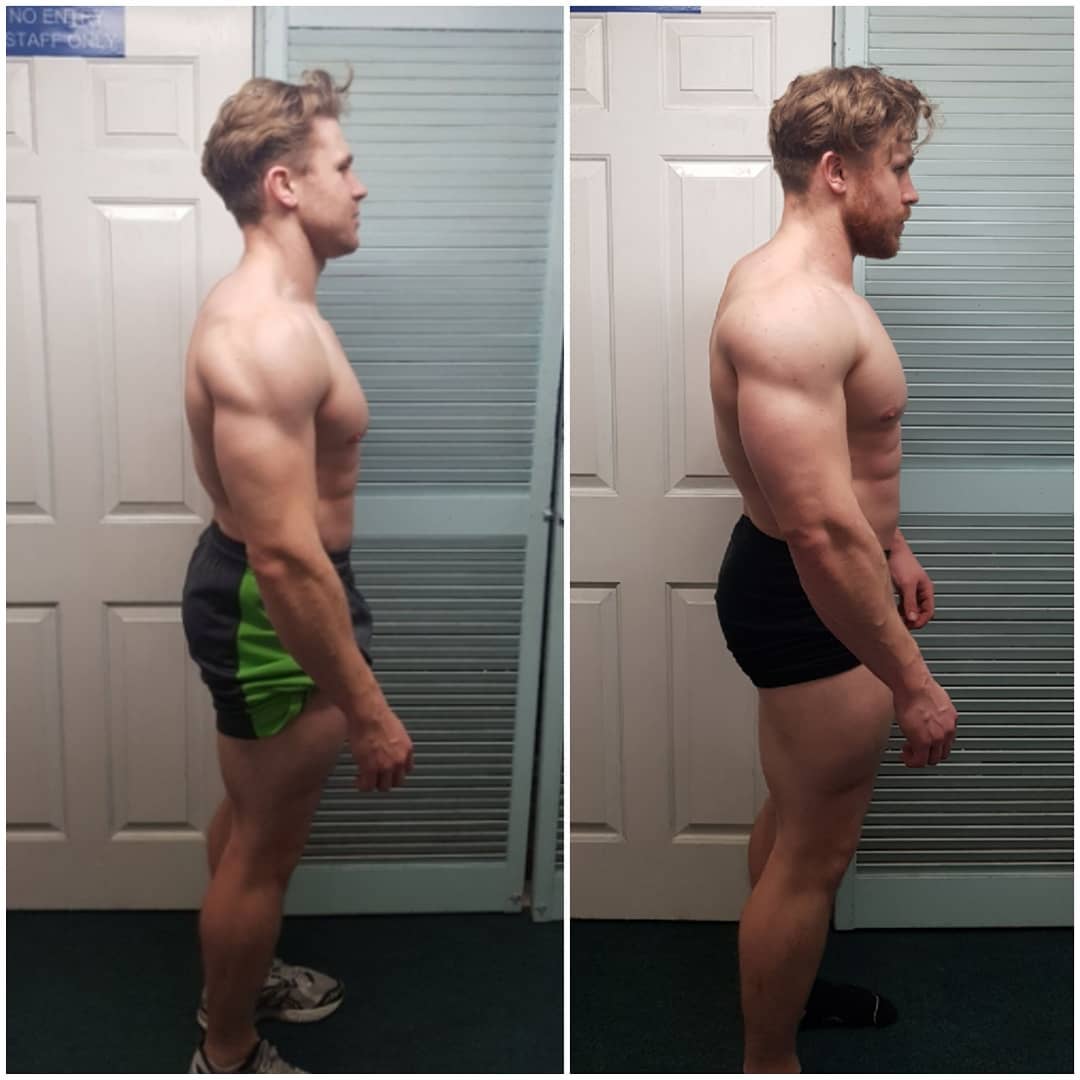
Increases in visceral fat may be predominantly attributed to the inclusion of MK-677 in this stack, with HGH enhancers increasing insulin resistance and lipogenesis in scientific literature, thus inducing visceral fat storage [21,22,23].
This user’s results, in terms of muscle hypertrophy, can be considered moderate—yet seemingly less than a typical first steroid cycle.
As a visual estimate, this user appears to have gained 10 pounds (4.5 kg) of lean mass.
In animal trials, RAD 140 has produced significant increases in muscle hypertrophy; however, in humans, we see a milder effect.
Human trials have compared the anabolic effects of testosterone enanthate versus SARMs. Researchers found that SARMs added 1-1.5 kg of lean mass to participants over 4-6 weeks, whereas testosterone enanthate added 5-7 kg [1].
RAD 140-Only Cycle: Before and After
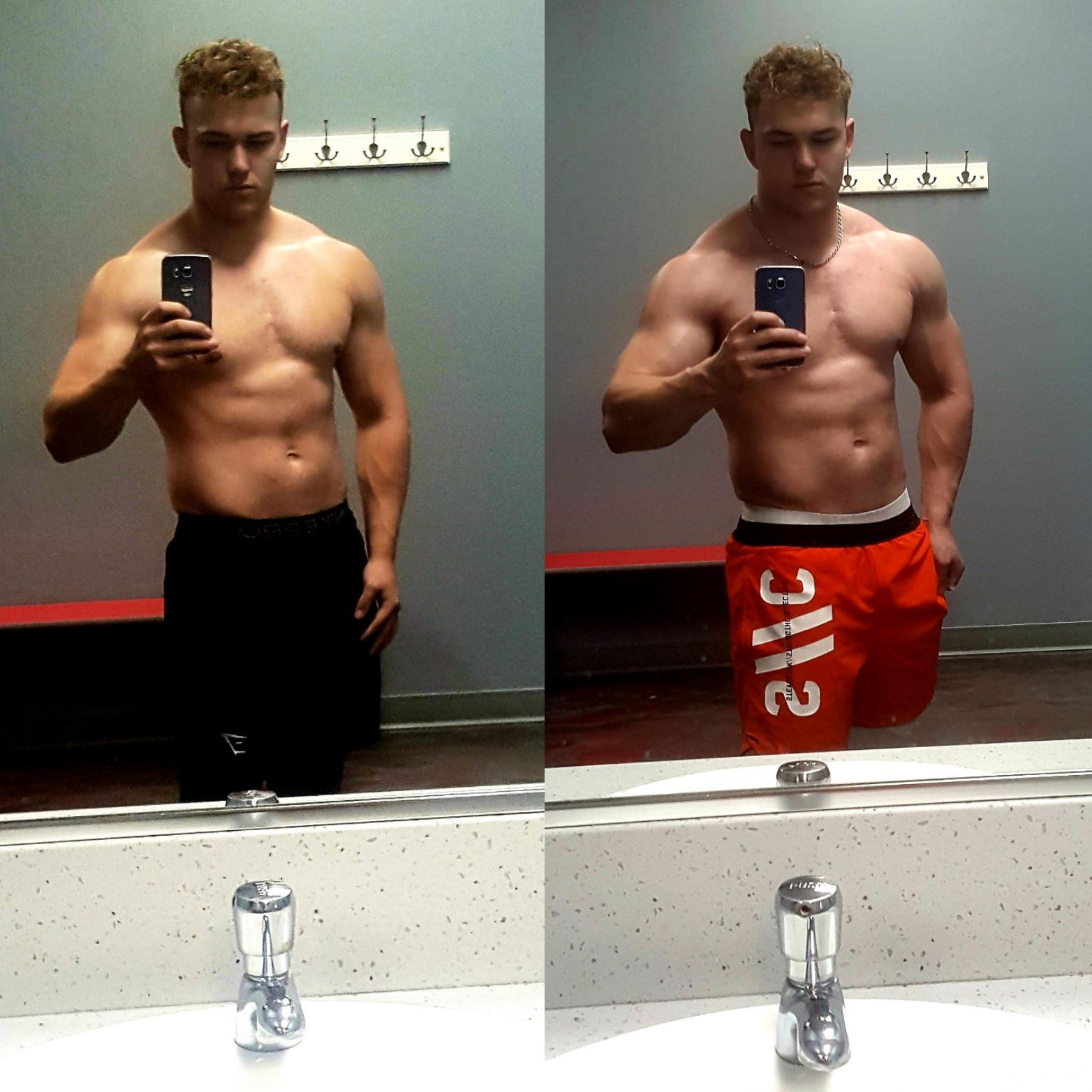
This Reddit user’s cycle:
| Week | RAD 140 Dosage |
|---|---|
| 1-12 | 17 mg/day |
He experienced modest improvements in muscularity, albeit with an increase in subcutaneous body fat.
He gained 5 lb (2.3 kg) in weight, with some of this being in the form of adipose tissue, due to 12 weeks of eating in a modest calorie surplus.
In comparison to the first RAD 140 before and after transformation, this user has not gained a notable amount of visceral fat, indicating that the other user’s increase in gut size was likely MK-677-related.
Some people might speculate that the RAD 140 (Testolone) utilized by this user is either not legitimate or diluted, as there are no significant results observed. However, this user’s source was verified to be a trusted manufacturer.
RAD 140 Before and After: 8-Week Cycle

The above Reddit user administered less than 10 mg/day of RAD 140 for the majority of his 8-week cycle, demonstrating that optimal results can still be experienced at a low dosage.
This user experienced significant fat loss despite claiming to eat in a calorie surplus. He is displaying enhanced:
- Muscle hardness
- Definition
- Thickness
Despite gaining 10 pounds on the scales, he stated that RAD 140 was not worth it for him. This was because his results were “unsubstantial,” and he experienced some hair loss.
This user’s experience indicates that low dosages of RAD 140 may increase its reward-to-risk ratio, with the subject gaining 10 pounds and losing a noticeable amount of subcutaneous fat simultaneously. However, individuals susceptible to male pattern baldness may experience some shedding on RAD 140. Such telogen effluvium is typically transient and does not result in long-term androgenetic alopecia unless RAD 140 is abused.
RAD 140 Dosage
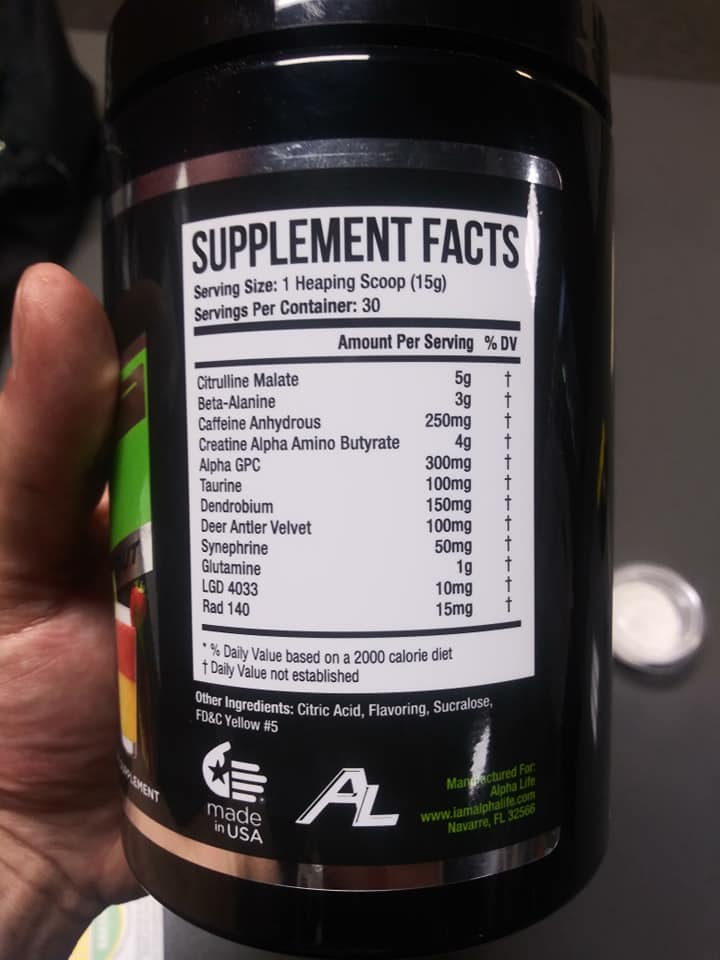
RAD 140 is not a pharmaceutically produced compound due to a lack of FDA approval. Thus, there are no dosage guidelines.
However, we see men commonly take 10-20 mg/day for 6-12 weeks to enhance body composition.
What is a Standard RAD 140 Cycle for Males?
| Week | RAD 140 Dosage |
|---|---|
| 1-8 | 10 mg/day |
Women commonly take 5-10 mg/day for a similar duration, enabling them to experience the benefits of RAD 140 but without any virilizing effects.
What is a Standard RAD 140 Cycle for Females?
| Week | RAD 140 Dosage |
|---|---|
| 1-8 | 7.5 mg/day |
RAD 140 typically comes in 10 mg capsules or a 10 mg/mL liquid solution.
What Are the Side Effects of RAD 140?
Based on in vivo studies, the following adverse effects may transpire from RAD 140 use:
- Liver toxicity and hepatitis [24]
- Hypertension [25]
- Hypogonadism
- Gynecomastia and edema
- Hair loss and prostatomegaly
In animal studies, RAD 140 has been shown to be less toxic than testosterone replacement therapy when administered to rats.
However, in humans, there appears to be a different trend, with RAD 140 demonstrating harsher side effects in some users. Dr. Nicholas Downey says that existing research indicates that RAD 140 causes “liver issues” at 50 mg/day, increasing the risk of cholestasis.
He also notes that RAD 140 is “quite suppressive,” but the extent of this gonadal side effect is unknown due to a lack of human studies.
Liver Toxicity
There is existing research to suggest RAD 140 can cause hepatocellular-cholestatic liver injury [26,27], as documented by Flores et al. (2020). A 49-year-old man had taken RAD 140 continuously for 4 weeks [28], with intermittent use afterward. He administered RAD 140 in conjunction with an antidepressant (venlafaxine) that he had previously been taking for 11 months.
The man’s alcohol consumption was insignificant. Therefore, the combination of hepatotoxic antidepressants and SARMs may be a deleterious duo [29].
The user in the second RAD 140 before and after picture also reported excessively raised alanine transaminase (ALT) and aspartate aminotransferase (AST) enzymes, demonstrating liver stress.
Dr. Thomas O’Connor, in his experience of analyzing over 2,000 patients on SARMs over a decade, has likened SARMs’ hepatotoxic effects to taking 50 mg/day of Anavar.
Dr. Ankit Batra also affirms that in clinical studies, the hepatic complications of RAD 140 “can be similar to anabolic steroids,” despite cases of hypertransaminasemia normalizing post-cycle [30].
RAD 140’s route of entry, being an oral product, is thought to be the main cause of hepatic stress. This is due to it having to bypass the liver upon entering the bloodstream, similar to C-17 alpha-alkylated anabolic steroids, which studies have shown to be hepatotoxic [31,32].
Elevated Blood Pressure
RAD 140 and other SARMs may have a dose-dependent effect on cholesterol and triglycerides, potentially increasing the risk of:
- Atherosclerosis [33]
- Myocardial infarction
- Cerebrovascular accident
The second user who published his before-and-after transformation reported a significant rise in blood pressure.
This is likely due to SARMs passing through the liver, which stimulates the hepatic lipase enzyme, causing HDL cholesterol levels to decrease. Feig et al. (2017) found that HDL cholesterol is beneficial to heart health, with high levels reducing arterial plaque [34].
Another possible contributing factor to undesirable blood lipids may be RAD 140’s lack of aromatization. In contrast, several anabolic steroids convert to 17β-estradiol, causing less significant shifts in cholesterol levels. This occurs due to estrogen having a positive effect on HDL levels; therefore, researchers have found that inhibiting this conversion is not optimal for cardiovascular health [35].
Testosterone Suppression
RAD 140’s aggressive binding effect with the androgen receptor can suppress testosterone levels and impair spermatogenesis, similar to anabolic steroids.
The extent of such suppression of SARMs has not yet been established. One of our patient’s total testosterone levels was 599 ng/dL prior to taking RAD 140. After an 8-week cycle, his score was 352 ng/dL.
The second user in the before-and-after transformation administered 17 mg/day of RAD 140 for 12 weeks and experienced a notable decline in testosterone levels, dropping from 750 to 193 ng/dL.
Thus, we have found that clinical hypogonadism is possible with RAD 140 via damage to the hypothalamic-pituitary-testicular axis (HPTA), potentially impacting users’ long-term fertility.
All SARMs appear to have a suppressive effect on endogenous testosterone. However, RAD 140’s impact seems to be more pronounced than other SARMs due to it being a potent compound.
Gynecomastia and Water Retention
Although RAD 140 does not aromatize, it can still elevate estrogen levels via a different pathway. When SARMs are administered, they begin to compete with a user’s natural testosterone for binding to the androgen receptor. SARMs win this battle due to their superior binding affinity, leaving more free testosterone to convert to estrogen or dihydrotestosterone (DHT), consequently raising both of these hormones.
What Visual Signs May Indicate High Estrogen on RAD 140?
Elevated levels of estrogen can cause:
- Water retention (hydropsy)
- Bloating (meteorism)
- Gynecomastia
Dr. Michael Moeller states that he has overseen male patients lactating from SARM use, including RAD 140. Thus, possessing a mild aromatase inhibitor (AI) when commencing a RAD 140 cycle can be advantageous [36].
What AIs Can Regulate Estrogen?
Androsta-3,5-diene-7,17-dione, otherwise referred to as arimistane, is a mild AI that can be utilized to inhibit estrogenic side effects.
In our experience, more potent AIs are likely to be excessively harsh for a SARM cycle, such as:
- Letrozole
- Aromasin
- Anastrozole
The three above AIs may cause a hormonal imbalance, causing an estrogen deficiency. Potent AIs are more suitable for anabolic steroid cycles, where estrogen levels rise considerably.
Hair Loss and Prostatomegaly
In animal research, it was thought that RAD 140 may benefit benign prostatic hyperplasia due to its successful tissue selectivity, causing prostate atrophy. In rats, RAD 140 demonstrated low levels of androgenicity. The rats required a 60-times higher dosage to replicate the prostatic hypertrophy of testosterone [37].
However, we have had RAD 140 users still experience androgenization, with bouts of hair loss. This may be attributed to natural testosterone converting to DHT, with the former no longer binding to androgen receptors.
Research indicates that higher DHT levels can increase inflammation and hair miniaturization on the scalp [38].
Can RAD 140 Accelerate Male Pattern Baldness?
In our experience, if users utilize RAD 140 for short-term use, such hair loss can reverse when hormones regulate back to normal post-cycle. However, long-term use and sustained high levels of DHT may increase the risk of androgenetic alopecia.
Increased sebum production is also possible, causing sensitive users to potentially experience acne vulgaris.
In theory, RAD 140’s tissue selectivity should prevent any androgenic side effects, which are portrayed in animal research [39]. However, its indirect impact on natural testosterone converting to DHT may be problematic for human users.
RAD 140 PCT
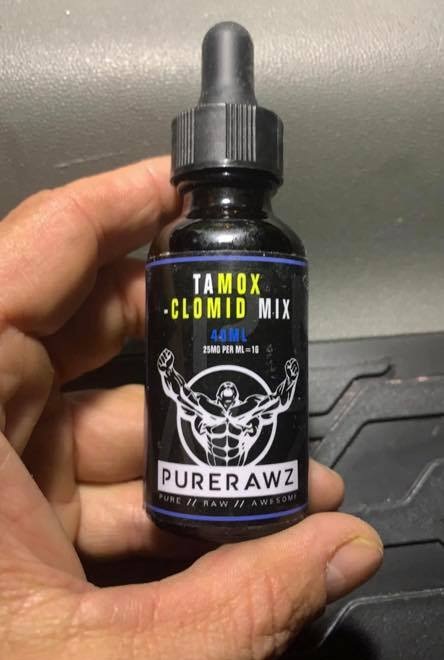
RAD 140 can suppress testosterone via the lowering of:
- Follicle-stimulating hormone (FSH)
- Luteinizing hormone (LH)
This is a consequence of its binding affinity to androgen receptors.
Some RAD 140 users check their testosterone levels post-cycle and experience notable suppression, causing them to undergo post-cycle therapy (PCT).
Users can begin PCT 12 days after finishing a RAD 140 cycle, based on its half-life of 60 hours. The elimination time is the half-life multiplied by 5.5.
Typically, we would prescribe Clomid or Nolvadex for PCT, with studies showing Nolvadex to be the stronger medication for restoring endogenous testosterone [40,41].
Clomid may be sufficient for post-cycle therapy if conducting a RAD 140-only cycle. However, Nolvadex is likely to be more optimal if stacking RAD 140 with other SARMs.
Clomid increases testosterone due to its agonistic effects on estrogen receptors in the hypothalamus, causing an increase in gonadotropin secretion via the anterior pituitary gland.
Nolvadex also increases testosterone biosynthesis by stimulating the release of gonadotropins from the hypophysis.
In terms of the dosage and duration of a RAD 140 PCT protocol, below are a couple of sample cycles.
| Duration | Nolvadex Dosage |
|---|---|
| Day 1-30 | 20 mg/day |
| Duration | Clomid Dosage |
|---|---|
| Day 1-30 | 25 mg/day |
Legal RAD 140 Alternative
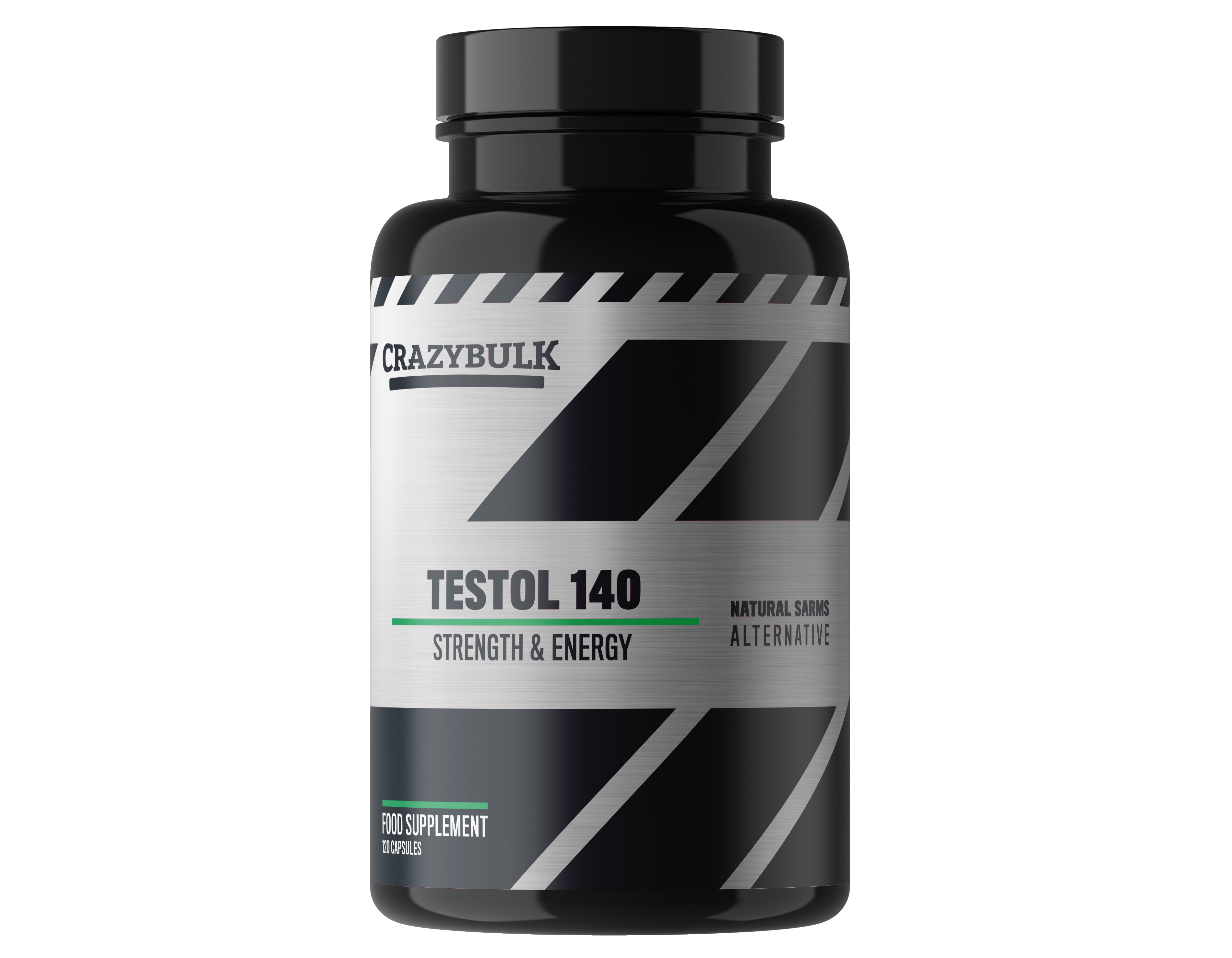
TESTOL 140 is our recommended RAD 140 alternative, mimicking the anabolic effects of RAD 140 but without any testosterone suppression or liver toxicity.
It is FDA-approved and thus legal to purchase for human consumption.
TESTOL 140 is best utilized when bulking for maximum hypertrophy and strength. It will also inhibit fat gain when eating in a calorie surplus.
What is the Half-Life of RAD 140?
Based on pharmacokinetic samples, RAD 140’s half-life is 60 hours [42]. However, daily dosing remains a common protocol among users, who initially estimated its half-life to be approximately 20 hours.
RAD 140 vs. LGD-4033: What is the Difference?
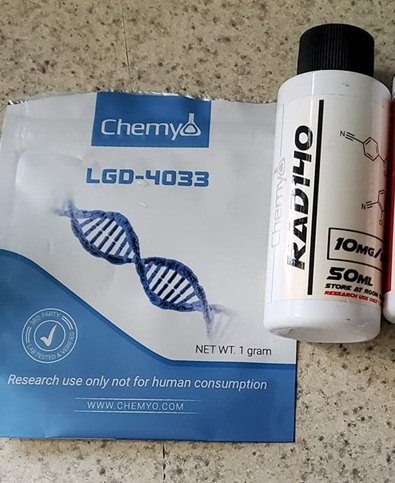
LGD-4033, or Ligandrol, is the more potent SARM per milligram. We have found that dosages of only 2-10 mg are necessary to see notable results from LGD-4033. RAD 140’s dosage is typically 10-20 mg.
RAD 140 seems to be a superior SARM in regard to increased:
- Pumps
- Subcutaneous fat loss
Thus, in terms of aesthetics, RAD 140 may be considered more optimal. We find that LGD-4033 causes more water retention; therefore, it may not be advantageous for users seeking:
- A lean physique
- Maximum muscle definition
A portion of the fat loss associated with RAD 140 may be indirect, due to it increasing satiation. 27% of metastatic breast cancer patients also reported decreased appetite during the first-in-human, phase 1 study of RAD 140. In our experience, its appetite suppressant effects are superior to LGD-4033’s [43].
In terms of muscle hypertrophy and strength, LGD-4033 and RAD 140 are similar in potency. We have observed RAD 140 to have a stronger muscle-hardening effect, possibly due to estrogen levels rising less and thus decreasing water retention. Researchers found that RAD 140 suppresses the ESR1 gene [44], which is believed to be the mechanism behind the SARM causing less extracellular water volume.
RAD 140 is likely to produce more prominent results in terms of muscular endurance, benefiting those who perform high numbers of repetitions or have a training schedule that incorporates regular cardiovascular training.
We typically find subjects report higher energy levels on RAD 140 than on LGD-4033.
LGD-4033, however, is known to increase libido more than RAD 140 on-cycle, according to our patients’ feedback.
What is the Price of RAD 140?
| RAD 140 Price | LGD-4033 Price |
|---|---|
| $64.99 | $59.99 |
Price source: Sports Technology Labs.
What Are RAD 140’s Stacking Options?
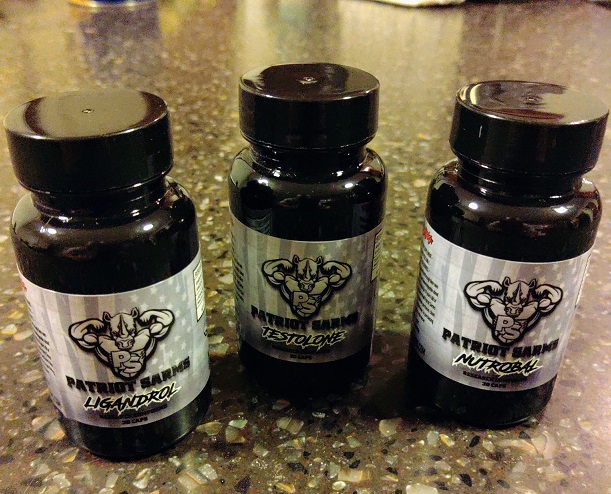
RAD 140 can theoretically be cycled with any SARM. Such stacking enhances:
- Muscular strength
- Hypertrophy
- Fat loss
However, according to Leciejewska et al. (2023), utilizing multiple SARMs simultaneously can also exacerbate side effects [45].
We have observed novices complete a RAD 140-only cycle initially to become accustomed to the drug. As a user gains experience, a more potent stack is commonly utilized, such as RAD 140 and LGD-4033, for additional mass and strength results when bulking [46].
In terms of dosages, a RAD 140 and LGD-4033 stack can look as follows:
| Week | RAD 140 Dosage | LGD-4033 Dosage |
|---|---|---|
| 1-8 | 10 mg/day | 6 mg/day |
However, given the early indications of RAD 140’s hepatotoxic effects in human research [47] and its negative effects on blood lipids, it may not be wise to stack it with further non-steroidal SARMs until it is better understood.
RAD 140 Reviews: How Are Subjects Responding?
Researchers in our private Facebook group have shared their RAD 140 reviews and experiences below.
RAD 140 is far stronger than LGD-4033, a great performance-enhancing SARM.
RAD 140 gives me too many side effects when I cycle it. If you utilize RAD 140, you might as well run AAS, I think.
RAD 140 is incredible. I just hit the 1,000-pound club at 52 years old with a body weight of 158 pounds.
I ran my first 12-week cycle of RAD 140 six months ago with no side effects or testosterone suppression that I could notice.
First day of week six on RAD 140, zero side effects, and everything is going great. 12.5 mg per day is all I need to stay lean while adding muscle and strength on all my lifts. I increased my calories by roughly 300 a day over the past two weeks to maximize my protein intake. My arms are extremely vascular. I love it!
RAD 140 is my favorite SARM. But for some reason, I always get night sweats towards the end of a cycle. Right now it is pretty bad; I will be lucky to get 5-6 hours of sleep a night because I wake up completely drenched. And that is not normal for me. Also, I do not know for a fact that RAD 140 is causing this effect, but it is something I have observed.
Frequently Asked Questions

Are There Specific Health Conditions That Would Contraindicate the Use of RAD 140?
The health of hypertensive individuals can deteriorate as a result of RAD 140 use, attributed to changes in cholesterol. One of our patients was suffering from high blood pressure prior to their appointment with us. After stacking RAD 140 with LGD-4033 for an eight-week cycle, our clinic diagnosed him with atherosclerosis.
Additionally, one of our patients developed peliosis hepatis after supplementing with 20 mg of RAD 140 per day for 12 weeks, in conjunction with monoamine oxidase inhibitors.
Can Users Drink Alcohol on RAD 140?
We have found RAD 140 to exhibit hepatotoxic effects. Therefore, combining RAD 140 with alcohol during a cycle increases the risk of hepatic injury.
What is the Optimal Diet When Supplementing With RAD 140?
In our experience, users commonly administer RAD 140 for bulking purposes. Thus, based on this objective, consuming calories with a surplus of 500 can enhance anabolism [48].
If RAD 140 is utilized for cutting purposes, we have found a calorie deficit of 500 to be efficacious in enhancing fat loss while maintaining muscle hypertrophy [49].
Are There Any Supplements That Can Help Reduce Toxicity From RAD 140?
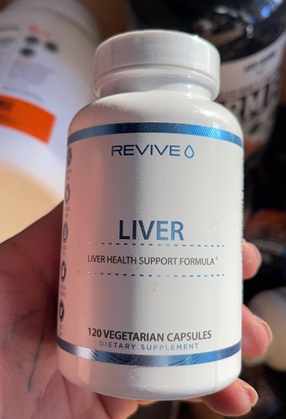
Yes, we have found tauroursodeoxycholic acid to be advantageous in reducing AST and ALT levels [50], which may be beneficial during a RAD 140 cycle.
Furthermore, our patients will commonly supplement with 3 grams/day of fish oil, containing docosahexaenoic and eicosapentaenoic acid, in an attempt to control blood pressure.
Clinical research also reflects this reduced cardiovascular risk from fish oil, although the results vary depending on the dose [51].
Can RAD 140 Cause Bloating?
Some users can experience bloating from RAD 140, and others do not. In our experience, lowering sodium intake has been successful in alleviating this adverse effect due to decreased plasma osmolality.
After modifying their diet in this manner to encourage diuresis, our patients have lost up to six pounds of water weight during RAD 140 cycles.
RAD 140 Pros and Cons
- Enhanced muscle hypertrophy
- Significant increase in muscular strength
- Fat loss
Cons:
- Smaller increases in fat-free mass compared to anabolic steroids
- May increase cholesterol
- Decreases endogenous testosterone
- Hepatotoxic effects
Summary
RAD 140 displays anabolic traits that may be beneficial to those seeking improvements in:
- Muscle hypertrophy
- Strength
However, there appear to be anabolic steroid-like risks associated with RAD 140, particularly concerning liver toxicity and cardiovascular strain.
Such deteriorations in health are evident in several human trials and correlate with Dr. Thomas O’Connor’s experience of treating males and females on RAD 140 for a decade.
With cardiotoxicity and hepatotoxicity effects occurring in some users, combined with modest results regarding muscular hypertrophy, RAD 140 may be less optimal than some anabolic steroids, such as:
What is Dr. O’Connor’s Experience With RAD 140?

Dr. O’Connor believes SARMs, such as RAD 140, are “potentially more dangerous than anabolic steroids,” following regular analysis of over 2,000 patients’ labs. Nevertheless, further clinical research on RAD 140 is required to fully understand its effects, with certain researchers observing positive changes in body composition without any discernible complications.
Co Authors :
Additional research
- According to Brown et al. (2023), RAD 140 may be an efficacious treatment for individuals suffering from sarcopenia. However, RAD 140 does not induce muscle hypertrophy in very high dosages of 5 mg/kg (52).
- Researchers conclude RAD 140 to demonstrate "acceptable safety" in its first human trial (53).
- In a clinical vignette, a 31-year-old male was diagnosed with scleral icterus and jaundice after 12 weeks of RAD 140 supplementation (54).
- During a 2020 case study, an individual developed jaundice and pruritus following a 7-week cycle of RAD 140 and LGD-4033 (55).
- Flores et al. (2020) documented a 49-year-old with moderate cholestasis after a 4-week cycle of RAD 140 (56).
- In a 2022 case report, a 23-year-old experienced jaundice as a result of a 12-week cycle of RAD 140, LGD-4033, and YK-11 (57).
- A 43-year-old male was reported with scleral icterus and hyperbilirubinemia following an 8-week RAD 140-only cycle (58).
References
(1) https://pmc.ncbi.nlm.nih.gov/articles/PMC2907129/
(2) https://pmc.ncbi.nlm.nih.gov/articles/PMC10403398/
(3) https://pubmed.ncbi.nlm.nih.gov/24189892/
(4) https://pubmed.ncbi.nlm.nih.gov/39755947
(5) https://pmc.ncbi.nlm.nih.gov/articles/PMC10392554/
(6) https://www.sciencedirect.com/science/article/pii/S266608492400216X
(7) https://pubmed.ncbi.nlm.nih.gov/10589853/
(8) https://pubmed.ncbi.nlm.nih.gov/20020375/
(9) https://www.ncbi.nlm.nih.gov/books/NBK548931/
(10) https://ec.bioscientifica.com/view/journals/ec/9/4/EC-19-0557.xml
(11) https://onlinelibrary.wiley.com/doi/10.1111/ijd.17567
(12) https://www.sciencedirect.com/science/article/abs/pii/S0960076018306885
(13) https://www.ochsnerjournal.org/content/22/4/361
(14) https://www.sciencedirect.com/science/article/abs/pii/S0305417918302870
(15) https://www.sciencedirect.com/science/article/abs/pii/S0003267004013650
(16) https://www.ncbi.nlm.nih.gov/labs/pmc/articles/PMC4018048/
(18) https://pubmed.ncbi.nlm.nih.gov/23650030/
(19) https://www.wada-ama.org/sites/default/files/2024-09/2025list_en_final_clean_12_september_2024.pdf
(20) https://academic.oup.com/jcem/article-abstract/83/2/320/2865101
(21) https://pmc.ncbi.nlm.nih.gov/articles/PMC9331610/
(22) https://academic.oup.com/jcem/article-abstract/81/12/4249/2650464
(23) https://pubmed.ncbi.nlm.nih.gov/10889795/
(25) https://pmc.ncbi.nlm.nih.gov/articles/PMC10420890/
(27) https://pubmed.ncbi.nlm.nih.gov/38444893/
(28) https://www.ncbi.nlm.nih.gov/labs/pmc/articles/PMC7049679/
(29) https://pmc.ncbi.nlm.nih.gov/articles/PMC6061298/
(30) https://pmc.ncbi.nlm.nih.gov/articles/PMC10024817/
(31) https://bmjopengastro.bmj.com/content/7/1/e000549
(32) https://pubmed.ncbi.nlm.nih.gov/4423214/
(33) https://pubmed.ncbi.nlm.nih.gov/37571268/
(34) https://www.ncbi.nlm.nih.gov/labs/pmc/articles/PMC5042826/
(35) https://academic.oup.com/cardiovascres/article-abstract/69/4/777/344756
(36) https://pmc.ncbi.nlm.nih.gov/articles/PMC3042921/
(37) https://www.ncbi.nlm.nih.gov/labs/pmc/articles/PMC3959610/
(38) https://pmc.ncbi.nlm.nih.gov/articles/PMC4174066/
(39) https://www.sciencedirect.com/science/article/pii/S1526590022001249
(40) https://pubmed.ncbi.nlm.nih.gov/19359408/
(41) https://academic.oup.com/jcem/article-abstract/95/12/5443/2835341
(42) https://cancerres.aacrjournals.org/content/80/4_Supplement/P5-11-01
(43) https://pubmed.ncbi.nlm.nih.gov/34565686/
(44) https://pubmed.ncbi.nlm.nih.gov/28974548/
(45) https://www.sciencedirect.com/science/article/pii/S0303720723001880#bib27
(46) https://pmc.ncbi.nlm.nih.gov/articles/PMC4111291/
(47) https://www.ncbi.nlm.nih.gov/pmc/articles/PMC7535764/
(48) https://www.sciencedirect.com/science/article/pii/S0261561424003467
(49) https://pubmed.ncbi.nlm.nih.gov/18549992/
(50) https://www.sciencedirect.com/science/article/abs/pii/S0011393X05806599
(51) https://www.ahajournals.org/doi/full/10.1161/JAHA.121.025071
(52) https://onlinelibrary.wiley.com/doi/10.1111/1440-1681.13824
(53) https://www.sciencedirect.com/science/article/abs/pii/S1526820921002408
(55) https://pubmed.ncbi.nlm.nih.gov/33062783/
(56) https://pubmed.ncbi.nlm.nih.gov/32140660/




